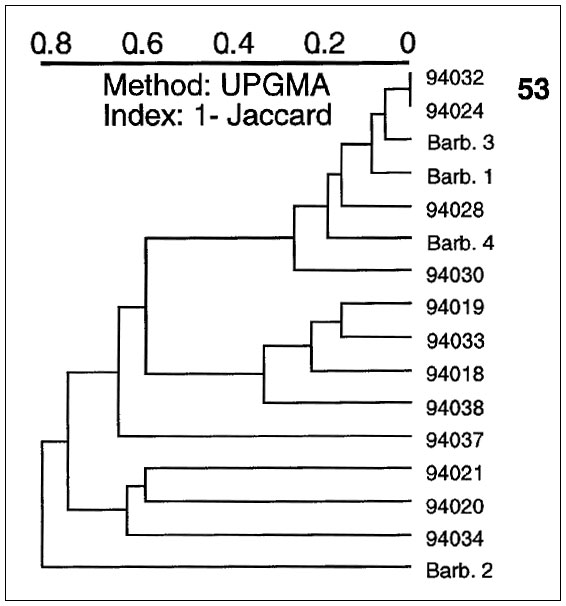Volume 5, Number 3—June 1999
Research
Tuberculosis in the Caribbean: Using Spacer Oligonucleotide Typing to Understand Strain Origin and Transmission
Figure 6

Figure 6. A dendrogram illustrating spoligotyping results of 16 Mycobacterium tuberculosis clinical isolates from Barbados and Surinam. From top: type 53, ubiquitous; isolates Barb.3 and 94030 belong to specific types 68 and 15, respectively; isolates 94018, 94020, 94034, and Barb.1 belong to ubiquitous types 19, 1, 3, and 61, respectively.
Page created: December 10, 2010
Page updated: December 10, 2010
Page reviewed: December 10, 2010
The conclusions, findings, and opinions expressed by authors contributing to this journal do not necessarily reflect the official position of the U.S. Department of Health and Human Services, the Public Health Service, the Centers for Disease Control and Prevention, or the authors' affiliated institutions. Use of trade names is for identification only and does not imply endorsement by any of the groups named above.